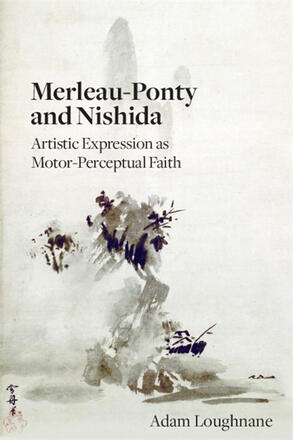
Merleau-Ponty and Nishida
Artistic Expression as Motor-Perceptual Faith
Alternative formats available from:
Places the phenomenologies of Merleau-Ponty and Nishida in dialogue and uncovers a demand for a motor-perceptual form of faith in both philosophers’ meditations on artistic expression.
Description
Winner for the 2023 European Network of Japanese Philosophy Award for Excellence in Japanese Philosophy presented by the European Network of Japanese Philosophy
In Merleau-Ponty and Nishida, Adam Loughnane initiates a fascinating new dialogue between two of the twentieth century's most important phenomenologists of the Eastern and Western philosophical worlds. Throughout the book, the reader is guided among the intricacies and innovations of Merleau-Ponty's and Nishida's ontological approaches to artistic expression with a focused look at a rarely explored connection between faith and negation in their philosophies. Exploring the intertwining of these concepts in their broader ontologies invokes a reappraisal of the ambiguous status of religion and art in the writings of both thinkers. Measuring these ambiguities, the ontologies of Flesh and Basho are read in-depth alongside great artworks and the motor-perceptual practices of seminal landscape artists such as Cézanne, Sesshū, Taiga, and Hasegawa, as well as other major figures of European, Chinese, and Japanese art history. Loughnane studies these artists' bodily practices, focusing on the intimate relations realized with the landscapes they paint, and illuminating a valence of their expressive disciplines as a motor-perceptual form of faith. Merleau-Ponty and Nishida is an exciting intercultural reading, expanding two philosophers' projects toward new horizons of research, revealing incitements in their writings that challenge unambiguous distinctions between art, philosophy, faith, and ultimately philosophy East and West.
Adam Loughnane is Assistant Professor of Philosophy at University College Cork, Ireland.
Reviews
"Merleau-Ponty and Nishida is an impressive achievement. The lucidity of Adam Loughnane's writing mirrors the author's astonishing ability to map the connections and disconnections of two complex philosophical systems. His scholarship is outstanding. Follow behind him along the path and you will be richly rewarded." — Culture and Dialogue
"Loughnane illuminates the ambiguous, chiasmatic, and dynamic relationality between the body and the world, providing concrete examples from art history East and West. He not only skillfully explains Nishida's and Merleau-Ponty's ontological notions, but also puts their philosophy to the test of art works, proving that their thinking reveals an important truth of art." — Takeshi Kimoto, Chukyo University